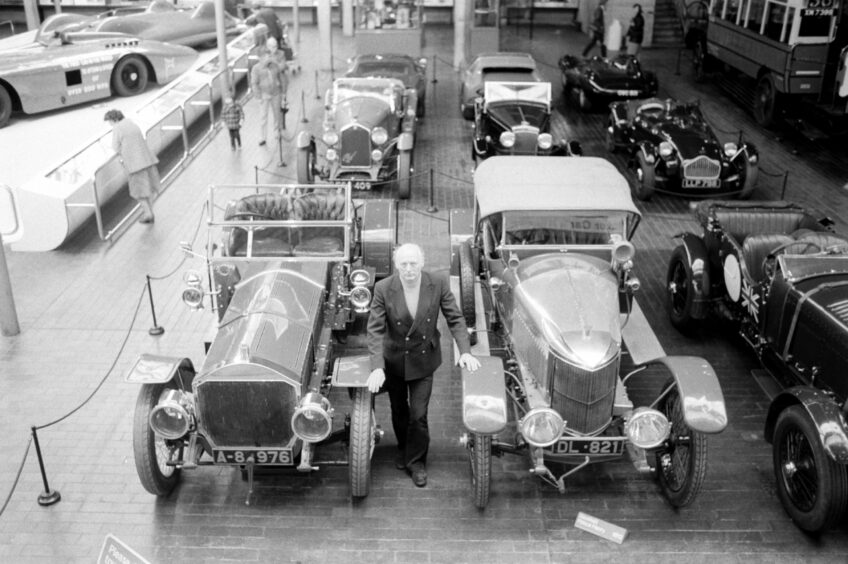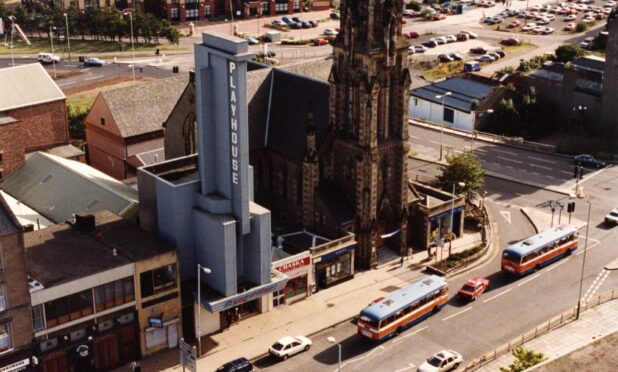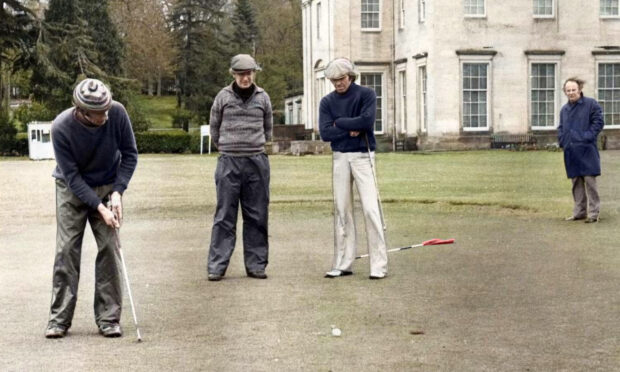The Rolls-Royce Silver Ghost epitomised glamour in the early days of motoring, but a surviving model has an unusual link to Tayside – where it was used as a hearse.
The Silver Ghost rolled off the production line and into the history books after being hailed ‘the best car in the world’ by critics in 1907.
A 1909 model of the iconic car that began life in Broughty Ferry is now a pristine centrepiece of the collection at the National Motor Museum in Beaulieu.
Admired by tens of thousands of visitors a year, the magnificent motor previously led a colourful life in Scotland.
The car was launched by Rolls-Royce in 1906 as the 40/50 horsepower, later named the Silver Ghost, and quickly became a byword for elegance.
In 1907, a demonstration model of the 40/50 was commissioned by Rolls-Royce managing director Claude Johnson.
It was painted in striking aluminium paint with silver-plated fixtures and fittings – and the gleaming car caught the world’s attention.
To prove the Silver Ghost had substance as well as style, Mr Johnson successfully drove the car from London to Glasgow and back 27 times with no unscheduled stops.
This remarkable demonstration of its reliability and comfort through 14,371 consecutive road miles saw it labelled ‘the best car in the world’ by motoring magazine Autocar.
The Silver Ghost’s record-breaking success, paired with its good looks, cemented Rolls-Royce’s reputation as the top luxury car manufacturer.
However, it’s not the alluring, argent bodywork that earned it its Silver Ghost moniker – but the car’s quiet and ‘ghost-like’ running.
There is a degree of irony that a car called the Silver Ghost was renowned for chauffeuring coffins rather than celebrities in Tayside.
Local roots
The car was built in 1909 and purchased by textile manufacturer Colonel WH Ferguson, who lived at The Bughties, a large house in Camphill Road, Broughty Ferry.
It had a deep claret-coloured seven-seater tourer body built by coach workers Hooper of London and it even had electric lighting.
John Morris, a Boar War veteran, was Col Ferguson’s chauffeur, having previously been his coachman in the horse and carriage days.
In the snow, John Morris would drive Col Ferguson down Camphill Road to Dundee in a horse-drawn sleigh – jingle bells and all.
Driving tests didn’t exist in those days so it was quite the norm that the coachman swapped the saddle for a steering wheel with no formal training.
The Ferguson family’s beautiful and beloved Rolls-Royce was a common sight around Broughty Ferry in the 1910s – and even went on holiday abroad with them.
The well-travelled touring car spent time with the family in France, Italy, Germany, Spain, and was even taken on their winter tours, with Mr Morris behind the wheel.
Around the outbreak of the First World War, Mr Morris founded his own garage and chauffeur-driven private hire firm in St Andrews Street in Dundee.
Becoming Dundee’s Rolls-Royce agents, he was later joined in business by his stepson, Tom Spence, and his own sons, Jack and Bill.
Driving Dundee’s dearly departed
Following the death of Col Ferguson in 1923, John Morris purchased the Rolls-Royce – and promptly had it turned into a hearse by Craigie and Mitchell of Laurencekirk.
He already supplied hearses to local undertakers in St Andrew’s Street in Dundee, but the Silver Ghost was particularly special.
With its austere dark livery – royal blue and black – the car could also be converted for use as a private ambulance.
The Silver Ghost spent seven years ferrying Dundee’s dearly departed on their final journeys, but as motoring took off, John Morris spotted another opportunity.
An increase in cars around Tayside also saw an increase in breakdowns and crashes.
In 1930, he decided to turn the Silver Ghost into a breakdown vehicle – complete with strengthened suspension to support a crane, dropside body and towing mechanism.
The once-regal Rolls was then painted blue with red wheels and a red undercarriage, and it remained towing marooned motors throughout the 1940s.
Restoring the grand old lady
In 1952, the Silver Ghost’s crane and towing mechanisms were removed, and the chassis and cab were bought by a local farmer.
Two years later, the grand old lady began her journey back to glory when Lord Edward Montagu, 3rd Baron Montagu of Beaulieu, acquired the car.
He had the car transported by rail from Berwick in the borders to his ancestral home at Palace House at Beaulieu in the New Forest.
Lord Montagu – whose father, John, was a motoring pioneer – had the car lovingly and extensively restored.
Such was Lord Montagu’s enthusiasm for cars, he founded the Beaulieu Motor Museum in the entrance hall of his home as a tribute to his late father, John.
When his collection of five cars outgrew the palace, it moved into the grounds, where it continued to grow in number and popularity.
Eventually, in 1972, a purpose-built museum was established housing more than 300 vehicles and motoring memorabilia, and the attraction was renamed the National Motor Museum.
The Silver Ghost’s fitting farewell
But despite having hundreds of vehicles at his disposal, the 1909 Rolls-Royce Silver Ghost – so well-known in Dundee – remained his firm favourite.
He was often photographed with the car, and in 1981 he even used it to give Liberace and Michael Jackson a tour of the museum grounds.
Echoing the car’s Tayside past, it was apt and poignant that upon Lord Montagu’s death in 2015, his Rolls-Royce Silver Ghost was used to transport his coffin to his funeral.
At the time, his eldest son, Ralph, said it was a fitting tribute as “the car was very closely associated with him over the decades”.





















Conversation